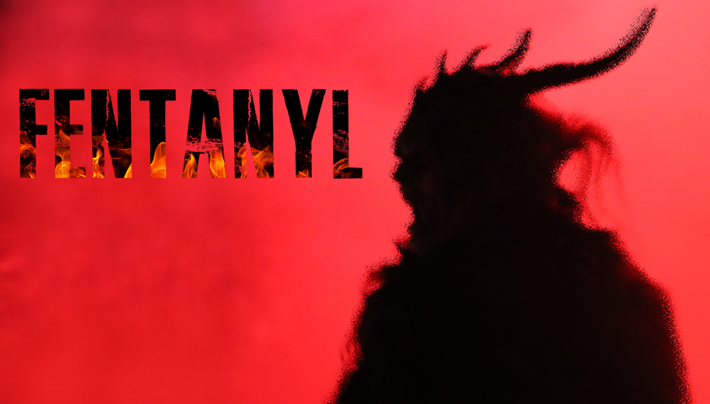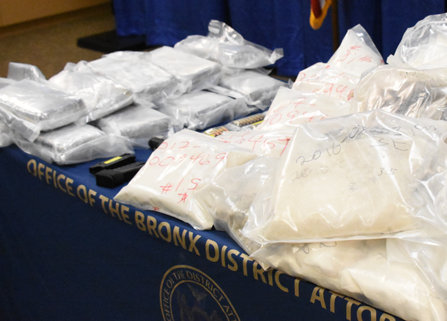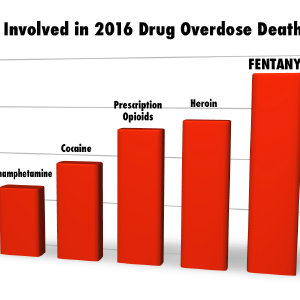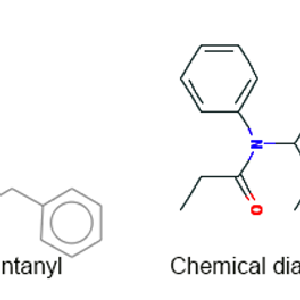Fentanyl: Truly, the Devil’s Drug

Anyone tracking drug abuse and addiction trends in the United States knows about fentanyl. It’s the powerful synthetic opioid that in medical use, is only given to those patients in such extreme pain that nothing else will give them relief. But on the streets, illicit fentanyl is an intensely dangerous synthetic opioid manufactured in completely uncontrolled illicit labs overseas or in Mexico. Once it arrives in the U.S., it gets mixed into heroin or pressed into pills or it’s simply sold as itself—fentanyl in powder form. Whatever form it takes, it seems to come directly from the Devil.

The Centers for Disease Control and Prevention (CDC) affirms this characteristic in their recent report, Deaths Involving Fentanyl. This report compiles statistics on overdose deaths from the fentanyl family of drugs (including acetylfentanyl and carfentanil) in ten states between July and December 2016. This number was then compared to the number involving other opioids like OxyContin, methadone, morphine, hydrocodone and similar drugs. The upshot is that we are losing far more people than ever before to drugs from the fentanyl family.
Here’s the statistic at the black heart of this issue.
- 2013: There were 3,105 deaths from the fentanyl family of deadly drugs.
- 2016: The number rocketed up to approximately 20,000.
In the ten states sampled for this CDC report, drugs from the fentanyl group were the direct cause of death in more than half the deaths resulting from any kind of opioid. Previously, prescription drugs had this dubious “distinction.” This is a clear sign of the increasing quantity of drugs from the fentanyl family making it into this country and our illicit drug supplies.
Statistics versus Human Beings

Those are numbers. Each number represents a human with dreams, strengths, weaknesses, loves and hates. There were young women who “lit up a room when they walked in.” Young men who “loved to make others laugh.” They were athletes, singers, teachers, soccer coaches, horse trainers, babysitters. People who wanted to save every stray animal they ever found, and young adults who called their mothers every day to say “I love you.”

They were youth who went to church every Sunday and others who dropped out of school when addiction became overpowering. And they were very often mothers and fathers of small children who will now be raised by grandparents or surviving parents.
Fentanyl is now stealing away tens of thousands of these bright, promising lives.
Honoring their Memories
How can we immortalize these people best?
- By doing everything we can to prevent other people from falling from the same cause.
- By not being naïve if we see someone whose life is a mass of unexplained problems, accidents, lost jobs and health issues. Very often, drug abuse, drug addiction or alcoholism is the real reason for these inexplicable and unrelenting difficulties. Don’t overlook or explain away these signs, whatever the age of your loved one, from middle school through retirement.
- By getting our loved ones into drug rehabs the very first moment it’s possible. If there’s a day they happen to say, “Yes, I need help,” the family can help best if they already have a rehabilitation program picked and financing worked out ahead of time. If they start looking when the person says he needs help, sometimes the person is gone again before they can get him (or her) through the doors.
- By protecting our young people from starting to use drugs. If you’re a parent, grandparent or other close relative, talk to them early and often. Be honest. Don’t exaggerate. But be clear on the danger and your insistence that they never touch drugs or drink alcohol while underage. It makes a difference.
You can probably think of other ways you can help. Please, do everything you can to keep the Devil’s Drug from stealing more lives.


 ®
®